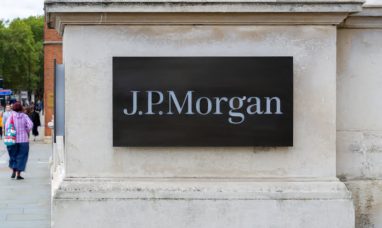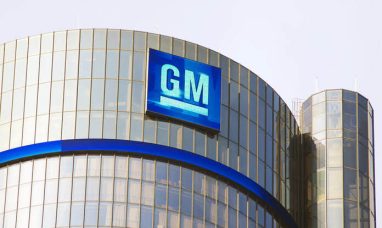Later this week, energy behemoths Chevron (NYSE:CVX) and Exxon Mobil (NYSE:XOM) will release their first-quarter financial results, giving investors their first indication of what to anticipate for the two U.S. majors following robust profits in 2022. In the meantime, a recent analyst forecast that CVX stock will perform better than XOM in 2023.
Prior to first-quarter earnings, FactSet forecasts show that Chevron and Exxon Mobil’s profits will decline by more than 20% from their 2022 highs in 2023. When Russia invaded Ukraine in February of last year, as the U.S. economy was recovering from the COVID pandemic, prices for oil, gasoline, and natural gas skyrocketed.
This led to record profits being reported by the oil industry, with Chevron, Exxon Mobil, and other energy stocks dominating the market.
Exxon Mobil was downgraded by Scotiabank analyst Paul Cheng on April 13 from outperform to sector perform. Cheng decreased the target price for Exxon Mobil stock from 140 to 135 as well.
Chevron was upgraded by Cheng from sector performance to outperform. The analyst also increased his target price for Chevron stock from 195 to 200.
Despite Exxon Mobil being the second-best performer in the S&P 500 Energy Index over the past 12 months, Cheng is favoring Chevron stock going into earnings. In Cheng’s opinion, Chevron is better positioned and might perform better than Exxon Mobil if oil prices rise.
Chevron Stock: Costs Of Oil And Gas
Prices for oil and natural gas have decreased significantly so far in 2023 compared to 2022. Wednesday’s price for American crude oil was $76.50 per barrel. In March, the price of oil fell as low as $66.74. U.S. oil futures reached a five-month high of $83.5 per barrel earlier in April as a result of an unexpected OPEC+ oil production cut.
Beginning in April, OPEC+—which consists of OPEC and significant allies like Russia—announced an unexpected reduction in crude oil production of about 1.15 million barrels per day beginning in May.
The performance of Exxon’s and Chevron’s earnings is also heavily influenced by the price of natural gas.
On Wednesday, U.S. natural gas was selling for about $2.18 per million Btu. For the first time since September 2020, natural gas futures fell below the $2 level in late February 2023. Prices for natural gas have dropped 78% from their peak of $10 in August 2022.
Chevron Stock: Earnings Estimates: According to FactSet, analysts expect earnings to rise 1% to $3.40 per share in Q1. According to the consensus, revenue will decline 11% to $48.60 billion.
The price of Chevron stock decreased 0.6% on Wednesday to 168.16. In March, CVX regained support above its 50-day line and 200-day moving average. The price of Chevron stock is consolidating, and 172.98 may be a good place to buy it.
Chevron’s Q4 results showed a 60% increase in earnings to $4.09 per share and a 17% increase in revenue to $56.47 billion. In contrast, 2022’s full-year profits soared 128% to $18.83 per share, while sales rose 51% to $246.25 billion.
Chevron reiterated plans to increase total oil and gas production by roughly 3% above current levels by 2027 at its annual investor day in February. The company aims to spend between $13 billion and $15 billion annually on capital projects.
During the investor day, CEO Mike Wirth stated that the company “intends to sustain higher returns in a lower carbon future and continue to win investors back to energy” with the help of “strong free cash flow, lower carbon operations, and new energy solutions.”
The $75 billion stock buyback program of the company started on April 1, 2023, and it has no set end date. The previous $25 billion Chevron stock buyback program started in January 2019 and ran until March 31, 2023.
Chevron’s carbon-reduction plan includes funding for biodiesel projects, carbon capture initiatives, natural gas, and hydrogen.
According to analysts, Chevron’s earnings will decline 24% from their 2022 highs to $14.37 per share in 2023. Additionally, Wall Street anticipates a 13% decline in sales to $205.42 billion in 2023.
Within the Oil & Gas-Integrated industry sector, Chevron stock is ranked tenth. The Composite Rating for CVX shares is 81 out of 99. A 66 Relative Strength Rating is assigned to the stock. EPS is rated at 77.
Wall Street expects Exxon Mobil’s Q1 EPS to increase 26% to $2.60 while sales will decline 5% to $85.65 billion.
Exxon Mobil stock also fell 0.6% to 115.76 on Wednesday along with Chevron stock. According to MarketSmith, Exxon Mobil broke out of a cup-and-handle base on Monday with a buy point of 117.28. All the way to 123.14 is the buy zone.
Exxon Mobil reported Q4 earnings per share (EPS) growth of 66% to $3.40 and revenue growth of 12% to $95.43 in early February. Exxon Mobil’s earnings surged 160% to $14.06 per share in 2022. To $413.68 billion, sales increased by 45%.
Exxon reported having $30.4 billion in cash at the end of Q3 and $29.7 billion at the end of Q4, respectively. The $6.8 billion reported at the beginning of the year was almost tripled by the company’s cash balance at the end of 2022.
The energy giant’s free cash flow increased by nearly $23 billion to $62.1 billion in 2022. Through dividends and share buybacks, Exxon Mobil gave shareholders a total return of $29.8 billion. The business also stated that by 2023, it would return up to $35 billion to shareholders.
According to Darren Woods, CEO of Exxon Mobil, the company “clearly benefited from a favorable market” in 2022.
“Our plan for 2023 calls for further progress on our strategic objectives, which include leading the industry in safety, operating, and financial performance,” Woods stated during the release of the Q4 earnings.
Analysts forecast a 27% decline in full-year earnings to $10.17 per share in 2023. A 10% decline in sales, to $373.48 billion, is anticipated.
The Strategy After 2023
Early in December, Exxon Mobil released its five-year corporate plan, stating that it anticipated keeping its annual capital expenditures between $20 and $25 billion through 2027. The oil giant also intends to increase the scope of its share repurchase program to $50 billion by 2024.
Exxon Mobil intends to increase its investments in projects that reduce carbon emissions to about $17 billion through the same period, in addition to maintaining its annual capital expenditure levels through 2027. In comparison to current levels, this represents a nearly 15% increase. Exxon will spend between $23 billion and $25 billion on capital projects in 2023.
Featured Image: Unsplash









